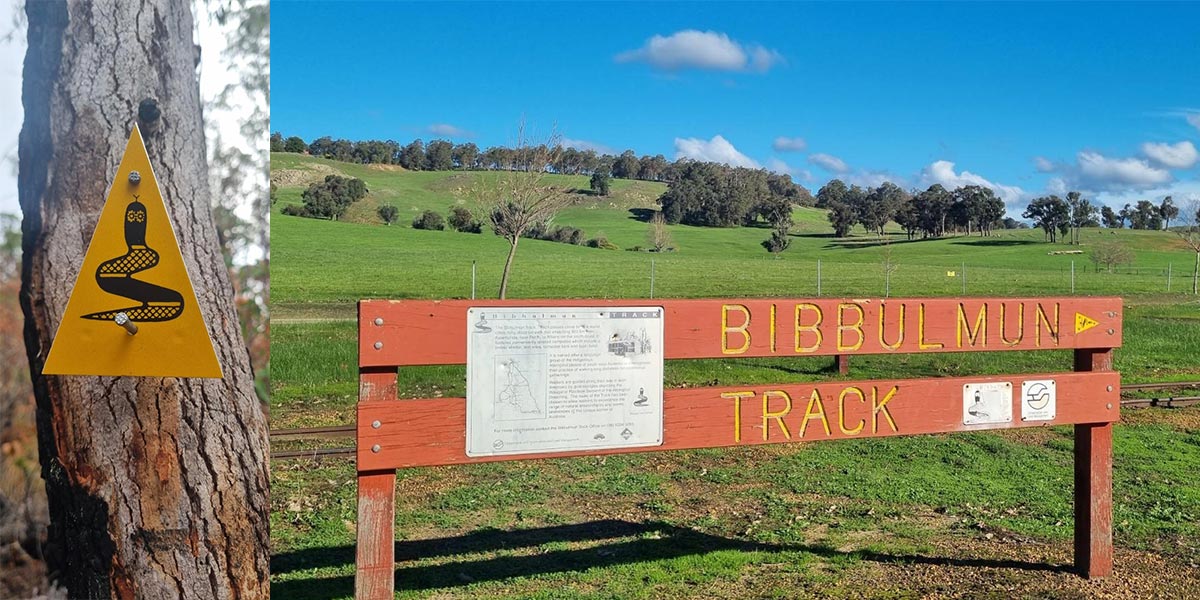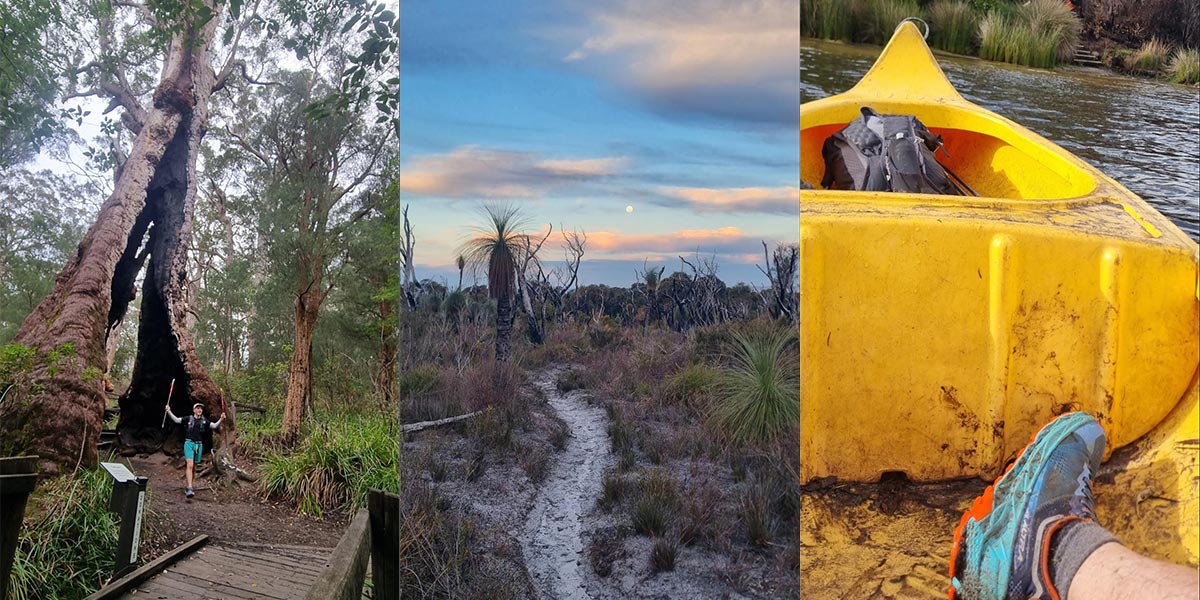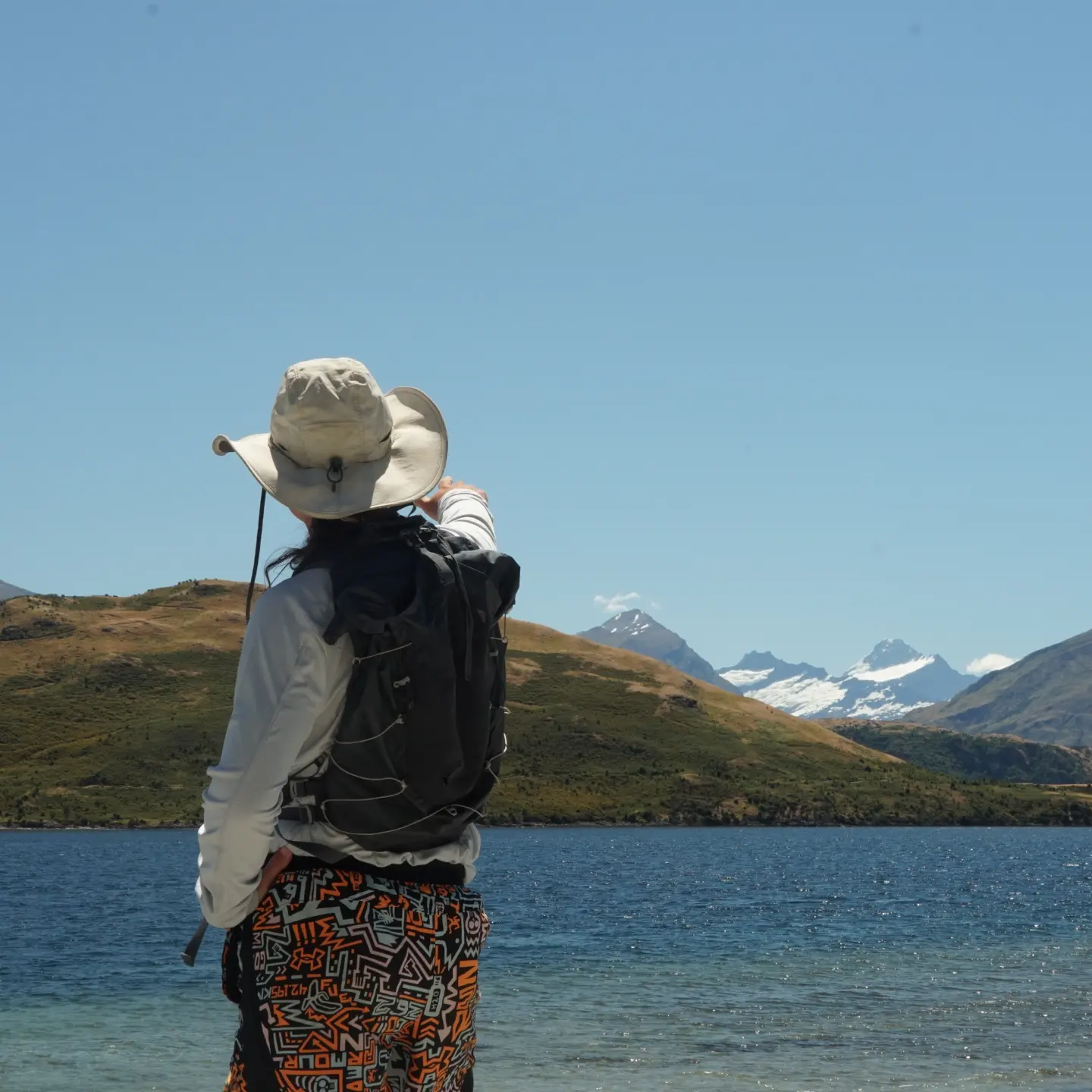Total Items: 0
Sub Total: $0.00
This track is named for and celebrates the early indigenous inhabitants of the area, the Bibbulman people, and their tradition of walking great distances for ceremonial gatherings. This trail is regularly marked with reflective Waugals (Rainbow Serpent) and offers three-walled huts and campsites at regular intervals along the way. Trail towns also divide the Bibbulmun Track into discrete sections and offer perfect points to resupply food and to take a rest. Most hikers complete the Bibbulmun Track in 6 to 8 weeks.

I had been feeling the pull of a proper adventure for months, a deep-seated urge to be immersed in nature, disconnected from the material world. Hiking, running, fastpacking, it didn’t matter - just somewhere new and full of challenge. But, then, my friend passed away, and I wanted the exact opposite - to fill my time with an unending string of stimulating activities; books and videos at home, audiobooks out of home, and seeing friends and family. With all these distractions, I had no time for introspection, to grieve, I was too caught up in other people’s lives, real and fictional.
It was no good for me, and I knew it. So I did a single day of planning, booked a flight to WA, and left shortly after. I started the Bibbulmun Track the night I arrived in Perth in arguably the worst rainstorm of the season. I was soaked through in minutes and the track was composed entirely of flowing or pooled water. I was relieved when I arrived at the first of many three-walled shelters along the trail, but my relief was short-lived as I discovered that I had forgotten to buy gas in my hurry to get to the trailhead. So I ate cold, crunchy noodles Mi Goreng and went to sleep damp and cold.
.jpg)
Shortly before my trip, I won my first ultramarathon - The Glasshouse 50 Miler. The unintended side effect of my victory was crippling plantar fasciitis. It was only a week before my flight to Western Australia, and the pain had only gotten worse. So, after a long string of phone calls to various Brisbane podiatrists, I finally found one that could prescribe and manufacture orthotics within two days.
When I started the trail, all seemed okay, just the usual aches and pains - I was surprised at the enormous difference the orthotics made to my foot pain. But as I have now come to believe, pain is a permanent fixture on a thru-hike. And though it may change its location and form, it will always be there. And so, as the orthotics resolved the plantar fasciitis, they also created blisters spanning the entirety of my arches. Blisters upon blisters upon blisters. The podiatrist said this would happen if I were to go ahead with my 60km/day plan, but I didn't expect it to be this bad. After 8 days and almost 500 km hiked along the Bibbulmun, the blisters were at last hardening and there was a brief six hour period of relief before the tendonitis in my forefoot set in.
The Bibbulmun was fantastic, even with the 10-14 hour days of toil. The strange forests and wild coastlines of Australia’s west coast just kept on surprising me. The trail started south from Perth through foggy and rainy jarrah forests littered with slippery granite outcroppings and small mountains.
.jpg)
Hundreds of black cockatoos screeched and flew overhead. After halfway, the biome shifted dramatically as the jarrah forests gave way to towering karri forests full of quendas and quokkas (thanks to recent pest eradication efforts). The trail then became sandier and the air felt saltier as I neared the coast. Paperbark trees dominated the landscape next, leaving the water stained like tea.

Then I heard the tumult of the waves crashing and I was greeted with one of the wildest coastlines in the world. Stark rocky outcroppings, tall cliffs, spooky islands, kangaroos bouncing over the tall banksia thicket that surrounded the trail - this was by far my favourite section of trail. The weather along the southern coastline changed on a whim, hailing one moment, sunny the next, then raining, then a little more hail, but it only added to the wildness of the experience. There was beauty in every part of the trail, whether that was the people I met along the way, the chance quokka I spotted darting across the trail, the serene kayak across Irwin Inlet, and there was even beauty in the pain and the overcoming of the pain.
.jpg)
.jpg)
.jpg)
Here are my top gear picks that I used along the Bibbulmun track.
After years of using a Sawyer Squeeze, it felt so freeing to use the Katadyn Water Filter. It was so fast to both filter water and to backflush, I really only have good things to say about this filter. I probably filtered 4L per day on the Bibbulmun Tracks (approx. 72L in total), and whilst I initially thought the 1000L recommended usage was quite low, it is more than enough for many long trips and a literal ton of water. The smart design of this filter/soft flask combo equates to a really packable and lightweight filter, perfect for any adventure.
.jpg)
This is my tried and tested ultimate sleeping setup for cold climates (and the Bibbulmun Track in WA’s rainy winter can get down to -10C in some parts). The Spark Sleeping Bag is an absolute workhorse, keeping me warm every night. I also love to unzip it and use it as a blanket on warmer nights. The Sea to Summit Ultralight Sleeping Mat and Aeros Pillow combo is comfy, and the Pillowlock system keeps that pillow from running away during the night. And though this mat is considered one of the louder, more crinkly ultralight mats, it really can’t be beaten on value.
.jpg)
Now, I’ve gone through about 18 trekking poles through my various thru-hikes (snapping/losing/having them stolen/z-pole chord breaking on the inside), so I started the Bibbulmun Track babying these top-of-the-line poles. But, the more and more I used them, the more I garnered trust in these featherlike (ONLY 182g/pole). I’m happy to report that they did not break or get lost and they will be my go-to poles for my next thru-hike. My favourite aspect of these poles was the mesh gloves that clip in and out of the poles, allowing you to really put a lot of power through every push, which really took a lot of the toll off my joints.
.jpg)
I treated myself to a new hat just before the Bibbulmun and instantly fell in love with Fractal and their running hats. It fit my slightly larger-than-normal head perfectly and it looks cool as heck.
.jpg)
I mistakenly started the Bibbulmun Track in a pair of Hokas (my podiatrist said the extra cushioning would help with the plantar fasciitis). However, after only a few days of slogging it on the trail, my feet had already started to swell, resulting in midfoot and pinky toe pain from getting squished inside the shoe. So what do I do? I get on Wild Earth and order an Altra shoe delivery to the next town, hoping it will arrive in Pemberton in time. Sure enough, I leave Pemberton in some new kicks, and my feet have instantaneous relief. My wide feet just aren’t built for Hokas, (no matter what my podiatrist says). The Olympus 5s are a new Altra for me, as I typically wear the Lone Peak on the trail or the Torin on the road. And I found the Olympus 5s to be the superior shoe for thru-hiking. They have more cushioning than the Lone Peak, a wider toe box than the Timp, and a serious Vibram tread that will take forever to wear out. Post trail, I’ve still been defaulting to the Olympus 5s that I wore on the Bibbulmun (even though they’re a bit destroyed from >1000km of use now) just because they’re so comfy.
Not sure what gear you need for your next running adventure? Chat with our friendly team of Outdoor Gear Specialists in-store or online today and don’t forget to share your adventures with us on Instagram by tagging @wildearthaustralia and #mywildearth in your next post.
About the Contributor:
 Reid Marshall is a hiking and trail running author, bike tourer, and obscene optimist. Nicknamed, 'Wombat', Reid can't get enough of the outdoors. Follow their adventures on Instagram.
Reid Marshall is a hiking and trail running author, bike tourer, and obscene optimist. Nicknamed, 'Wombat', Reid can't get enough of the outdoors. Follow their adventures on Instagram.